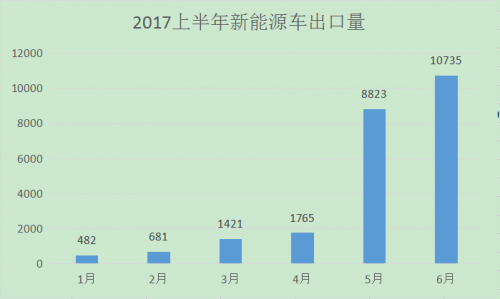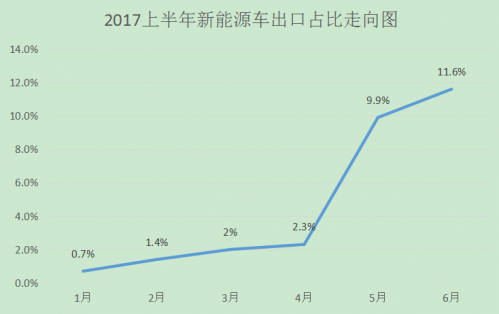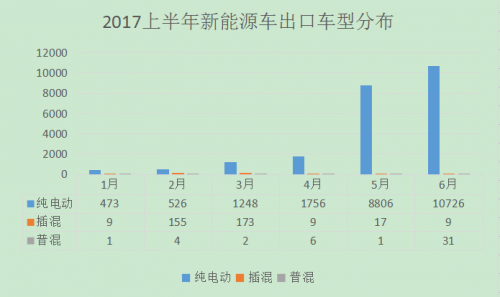According to the China Automobile Association, since 2012, China's auto exports have seen a decline for four consecutive years. However, in 2016, the country still managed to produce and sell 28.119 million and 28.528 million vehicles respectively, maintaining its top position globally for eight straight years. Let’s explore this topic with our car electronics editor.
Despite being the world's largest market by sales volume, China's auto exports remain a small fraction of its domestic sales, highlighting some challenges within the industry. This situation has led many to look for new opportunities that could shift the balance.
In a year where traditional auto exports struggled, new energy vehicles emerged as a bright spot. These electric cars are growing rapidly, offering a potential breakthrough for the sector.
According to the Association, in the first half of 2017, China exported 23,907 new energy vehicles, making up 5.3% of total vehicle exports. In June alone, this figure rose to 11.6%, showing promising growth.



> What is the export price?
Currently, the average export price of new energy vehicles remains relatively low. Some pure electric passenger cars are sold for around $1,000, with monthly exports reaching nearly 10,000 units. Meanwhile, electric buses tend to be more expensive, averaging around $200,000, though the volume is much lower.

> Where are these vehicles going?
In June 2017, new energy passenger cars were mainly exported to countries like Bangladesh, South Korea, Chile, and India, with an average unit price of around $1,642. The pricing isn't high, but the numbers are growing.
For new energy buses, the main markets included South Korea (10 units), Israel (8 units), and the Netherlands (5 units). Although the quantities are small, the prices are significantly higher, often reaching $200,000 per unit.
> New energy vehicles show great export potential
Although the average export price of new energy vehicles is still not high, the number of units being exported has reached a significant scale. The share of new energy vehicles in overall auto exports is steadily increasing.
As early as July 2015, a timeshare leasing company called SHARE’N GO was established in Milan, Italy, with Zhidou as the controlling shareholder. This marked one of the early steps in China’s push into the global EV market.
A Norwegian delegation once said in Shenzhen: “Norway doesn’t have any electric vehicle manufacturers, so companies like BYD have huge potential in the Norwegian market.â€
On June 29, 2017, Shanghai Automotive Group announced plans to build an independent production base in India. This move signals confidence in the Indian market for Chinese EVs.
On July 28, 2017, BYD New Energy received praise from the mayor of São Paulo, Brazil, further highlighting the growing international recognition of Chinese electric vehicles.
This article discusses the potential of new energy vehicle exports and how they might help reshape China’s auto export landscape. For more updates and detailed information, stay tuned to our automotive electronics section. We aim to bring you the latest insights and developments in the industry.
Digital Printing Graphic Overlay
Digital Printing Graphic Overlay,Membrane Switches Graphic Overlays,Membrane Switch Panels ,Membrane Switch Button
CIXI MEMBRANE SWITCH FACTORY , https://www.cnjunma.com